Toradja culture, Great Sunda Islands, Sulawesi Island, Indonesia
Late 19th - early 20th century
Jackfruit wood, pewter and pigments
H. 132; L 31 cm
Wooden anthropomorphic sculpture, carved standing, with removable forearms and hands outstretched in a gesture characteristic of Tau-Tau funerary sculptures.
The oval head features a pair of almond-shaped eyes inlaid with pewter inserts - the circular pupils are enhanced with black pigments; an incised mouth with thin lips, a top of the skull that must once have been topped with a bun and eyebrows elegantly painted with black pigments.
Jackfruit wood was reserved for sculptures of high dignitaries. The spiral body tattoos painted with black pigments on both calves also reflect the high social standing of the individual depicted.
These effigies, regarded as funerary guardians, intercessors between heaven and earth and protectors of life and mankind, were placed at the entrances to cliffside tombs.
Formerly dressed in full sarong dodo, baju to dolo jacket and seppa tallu buku breeches or kain mawa cloth, they could be either male or female - depending on the deceased depicted.
A headdress or a head of hair could also cover the top of the figure's head. Mobile forearms made dressing easier.
Tau means “person” or “man”. The repetition Tau Tau refers to the idea of an image combined with its resemblance to an identity. Thus, these statues are representations of deceased men and women - whom a priest, with the help of his chants, could animate. Indeed, following a ritual and a procession, the clothed mannequin received the soul of the deceased. It thus became more than a funerary portrait: a form of reincarnation of the living, even a divinized ancestor by attaining the status called “deata”.
Provenance :
- Galerie Manfredi
- Private collection, Paris.
Text and photos © FCP CORIDON
Code: 5070


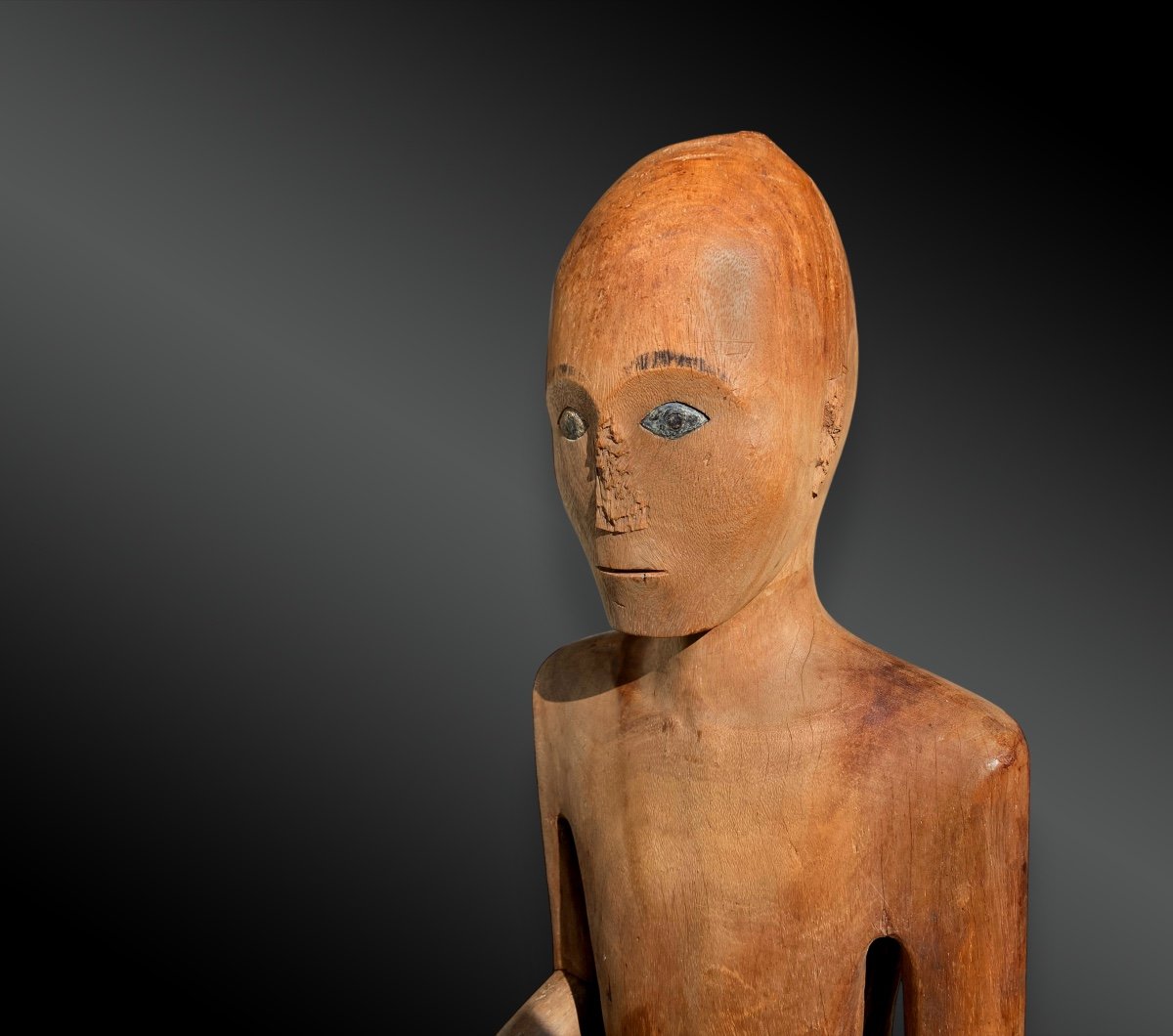
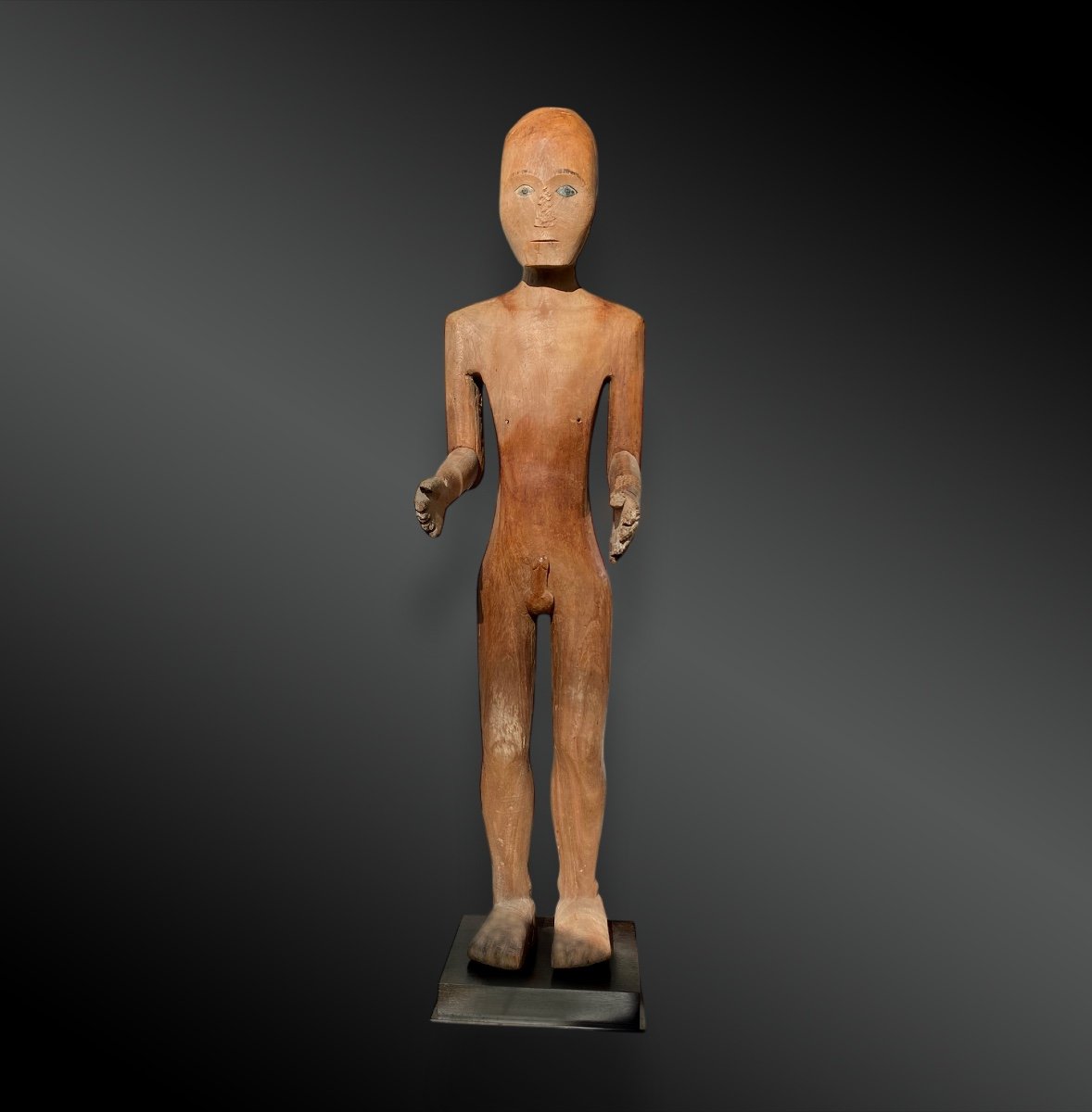
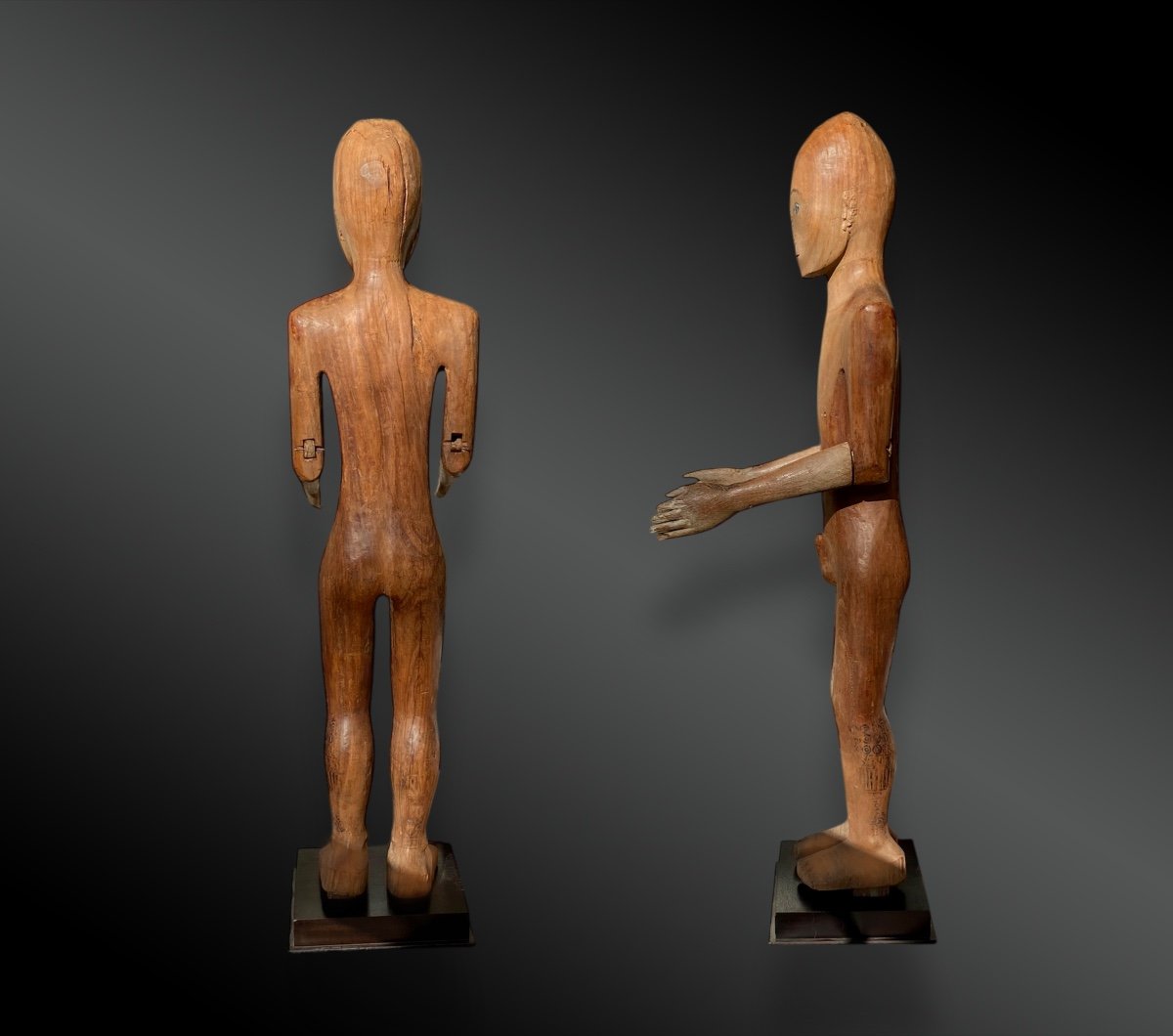
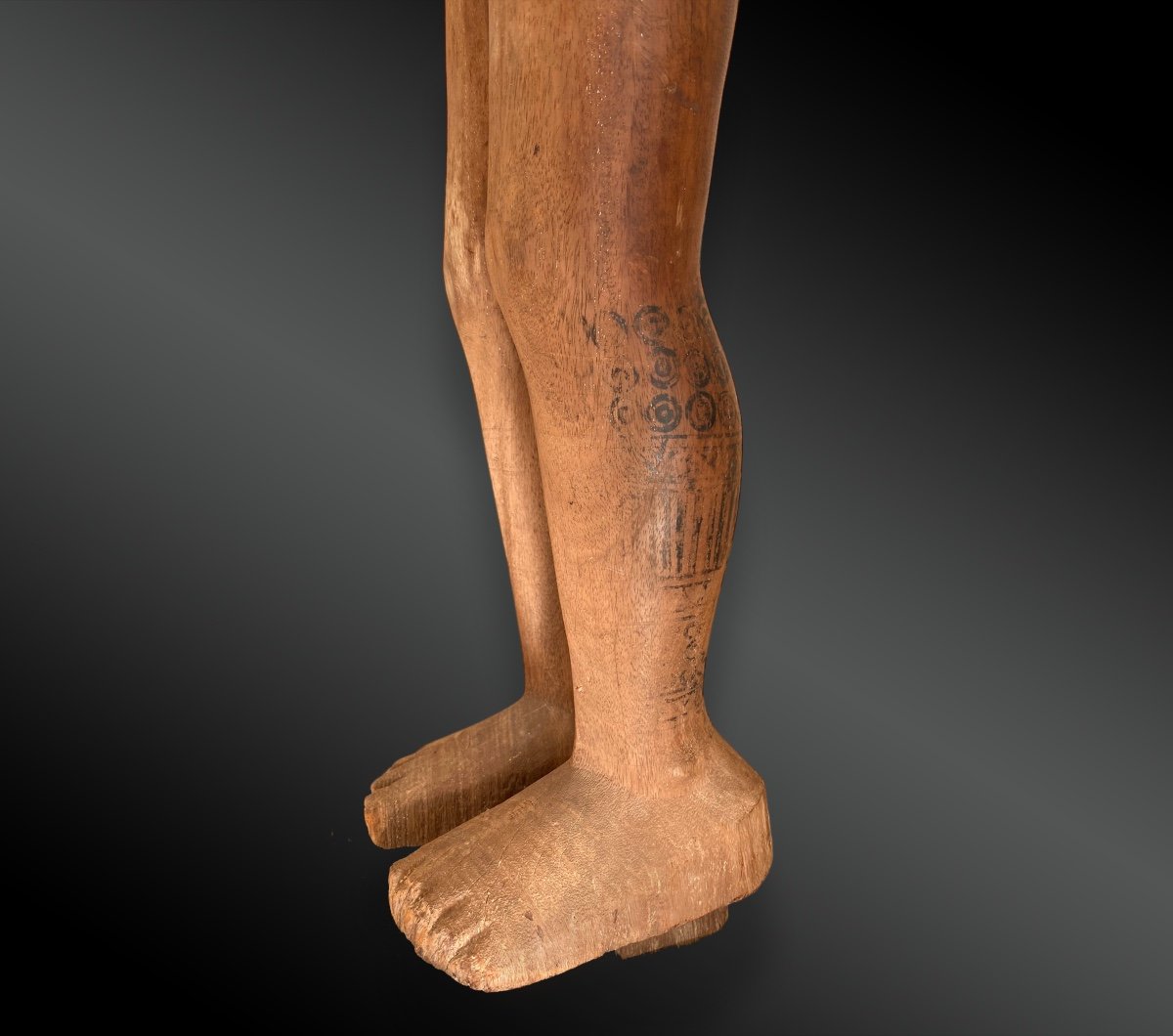
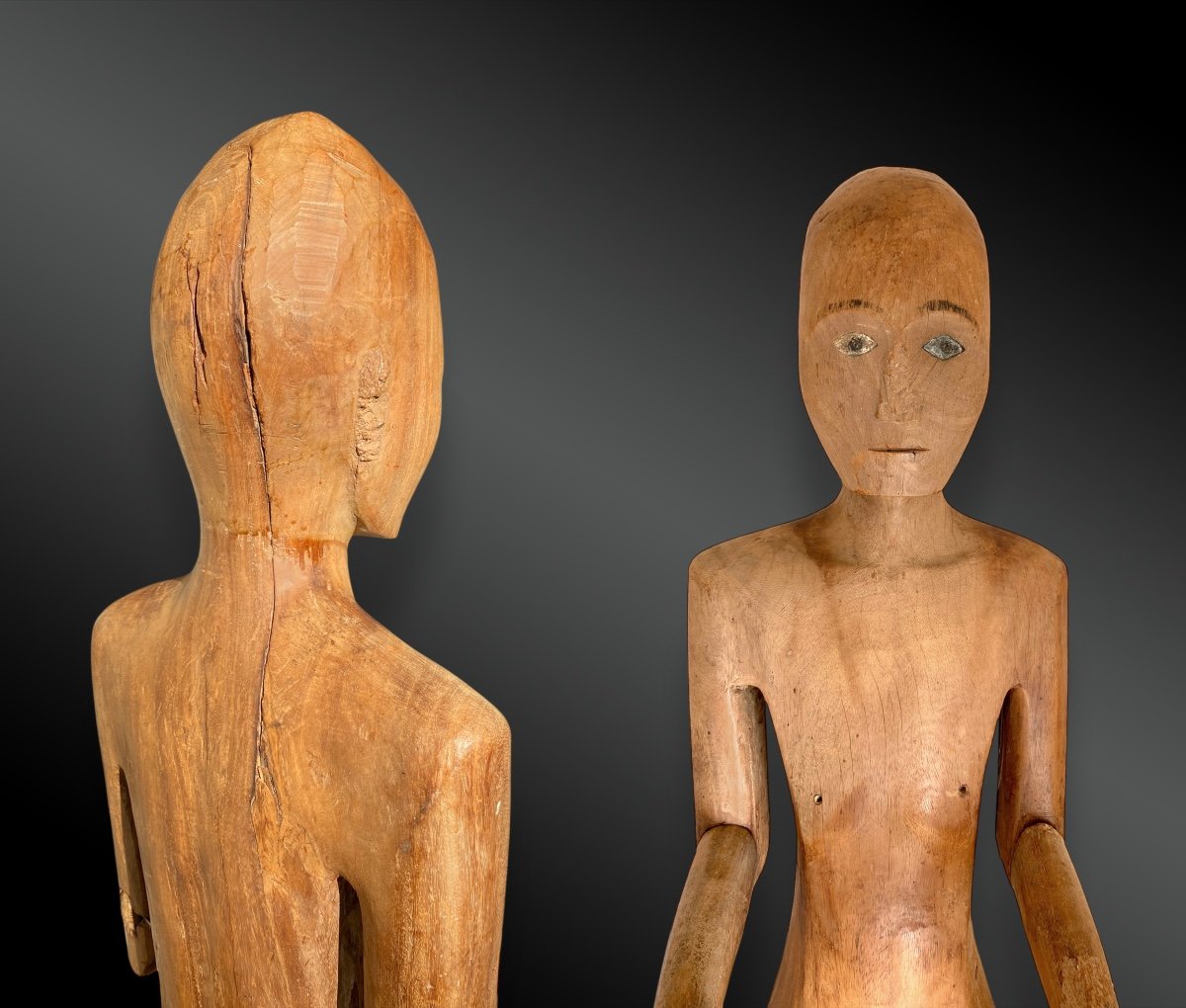
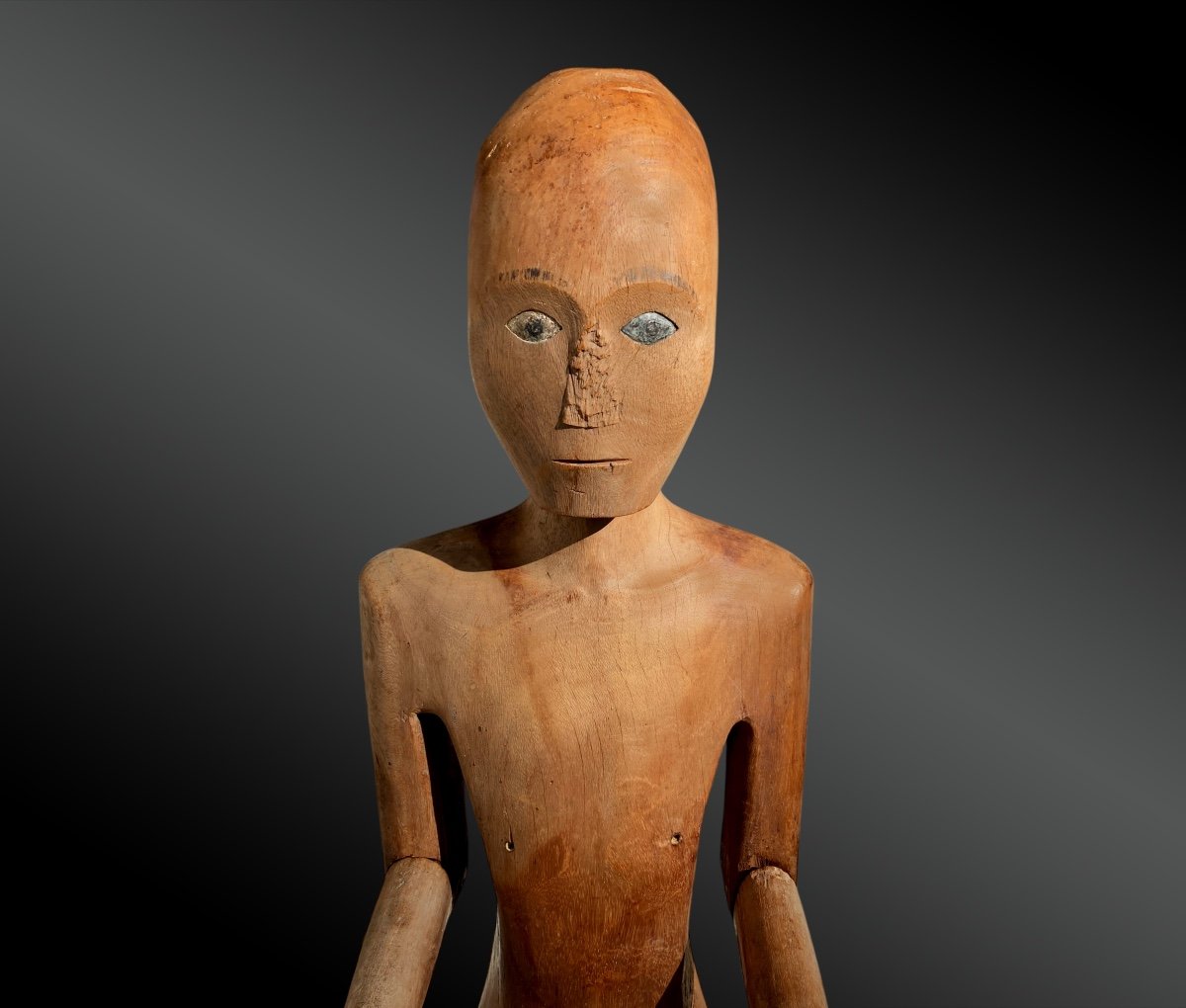









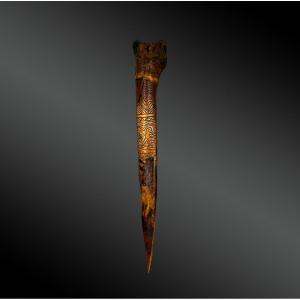

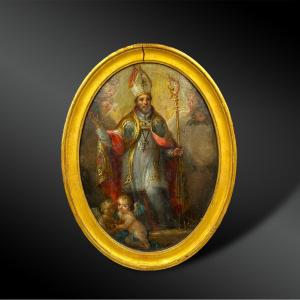


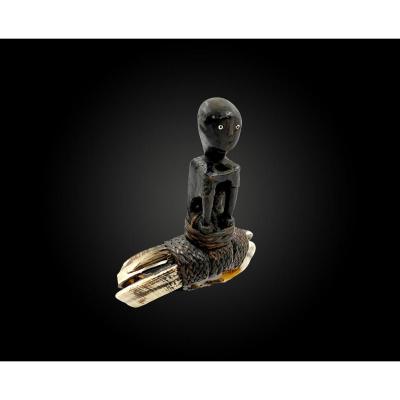
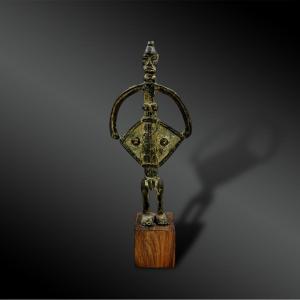

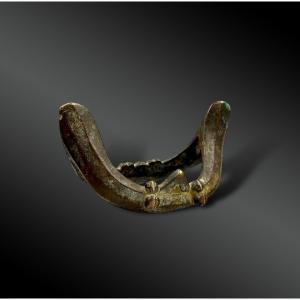

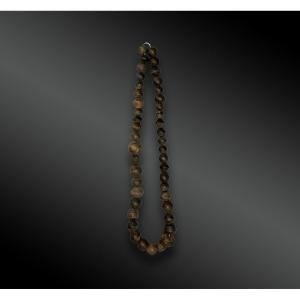
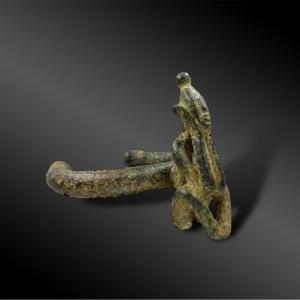

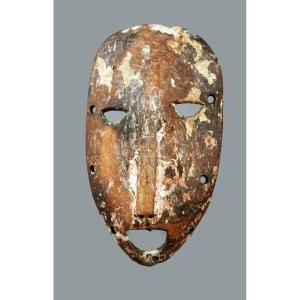
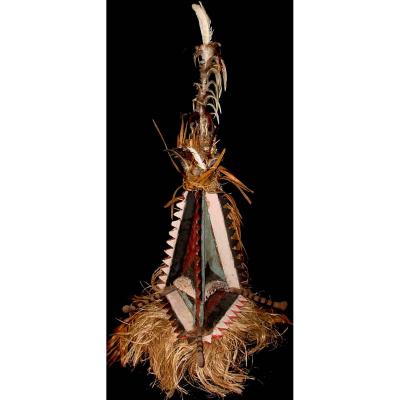

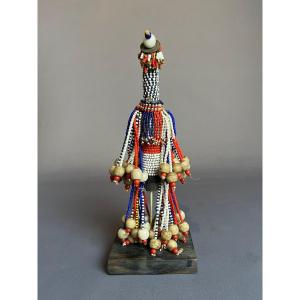
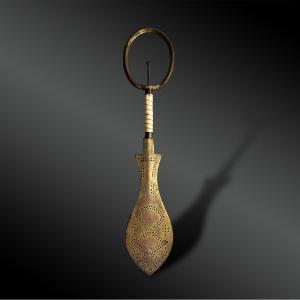



 Le Magazine de PROANTIC
Le Magazine de PROANTIC TRÉSORS Magazine
TRÉSORS Magazine Rivista Artiquariato
Rivista Artiquariato